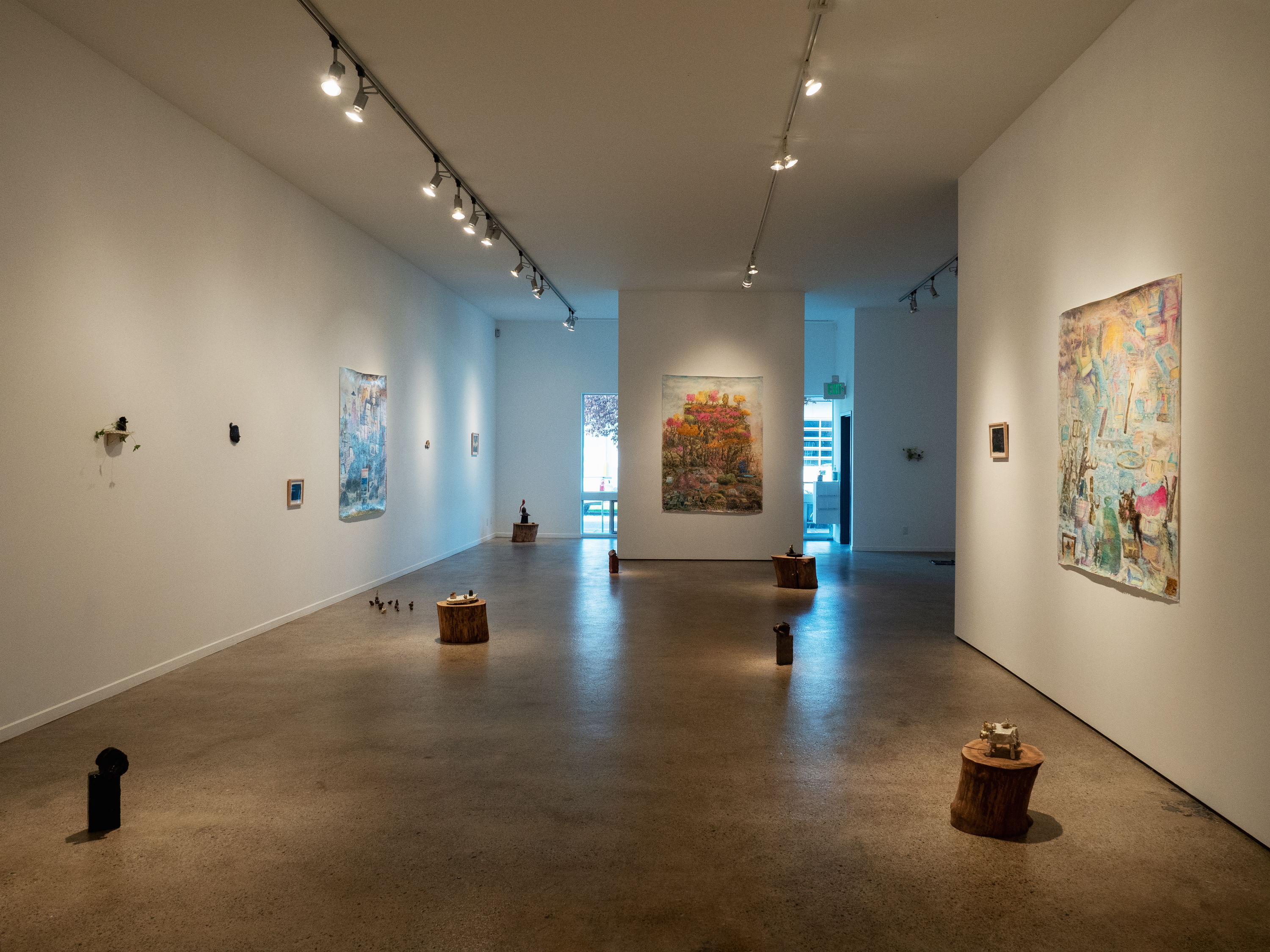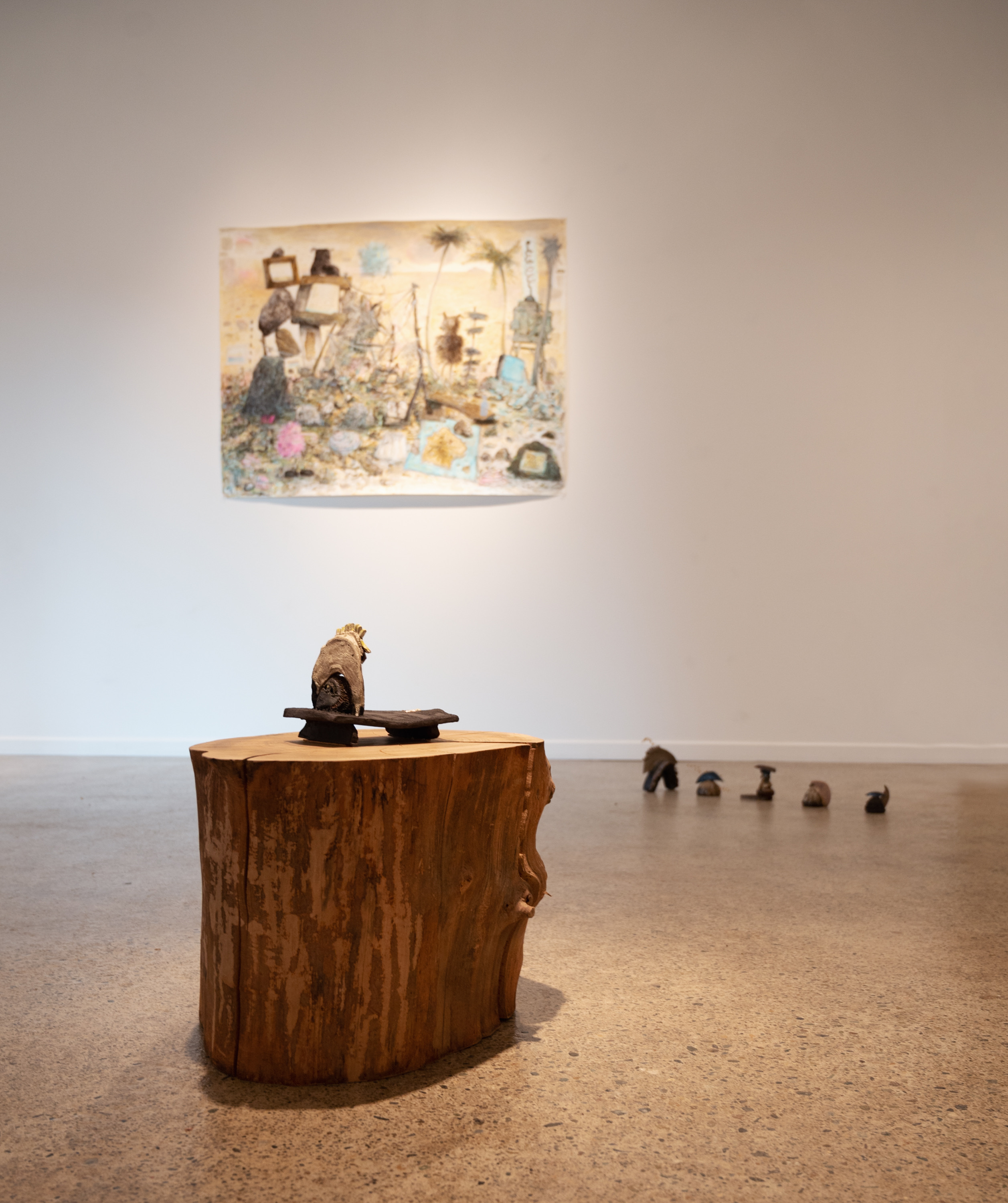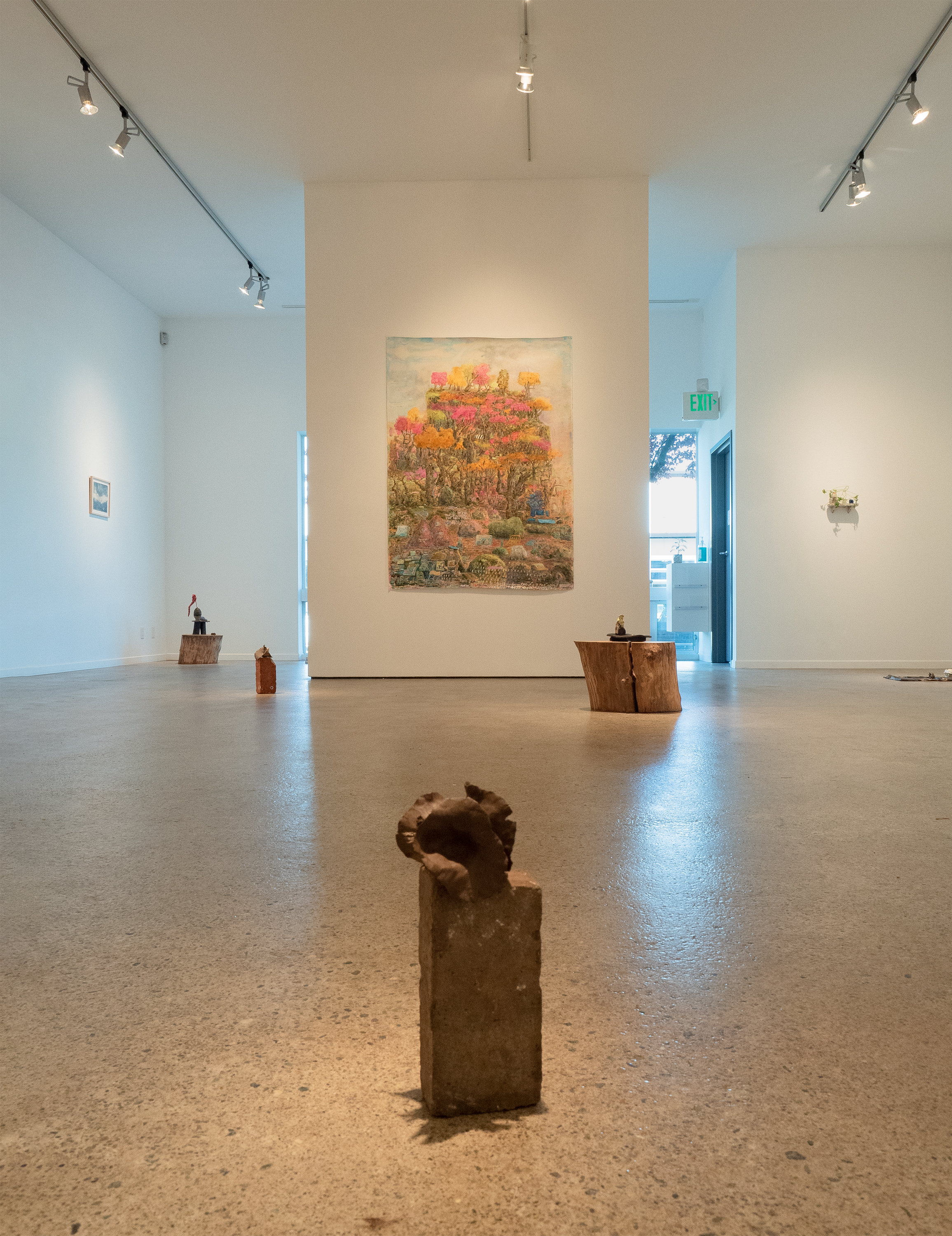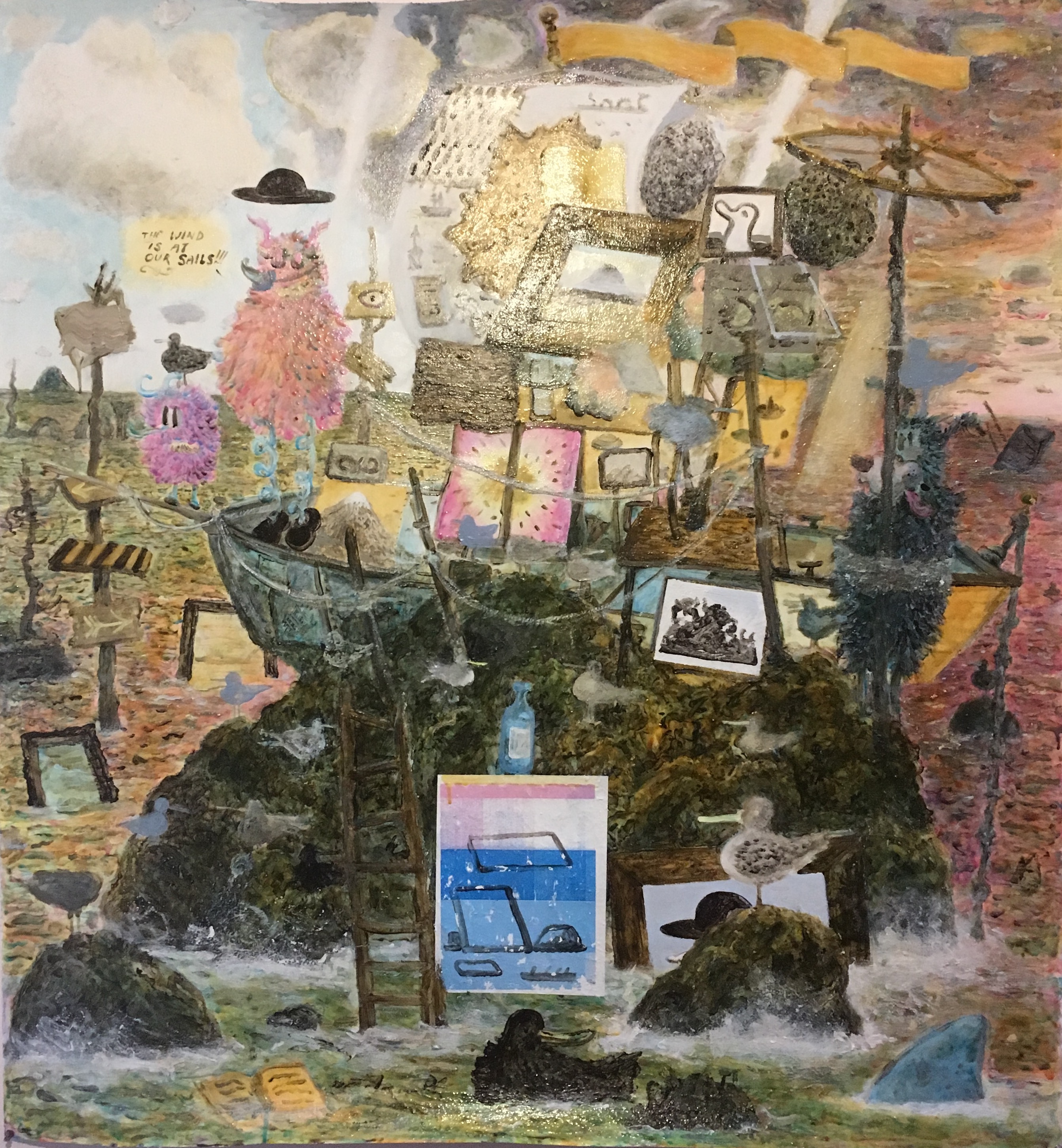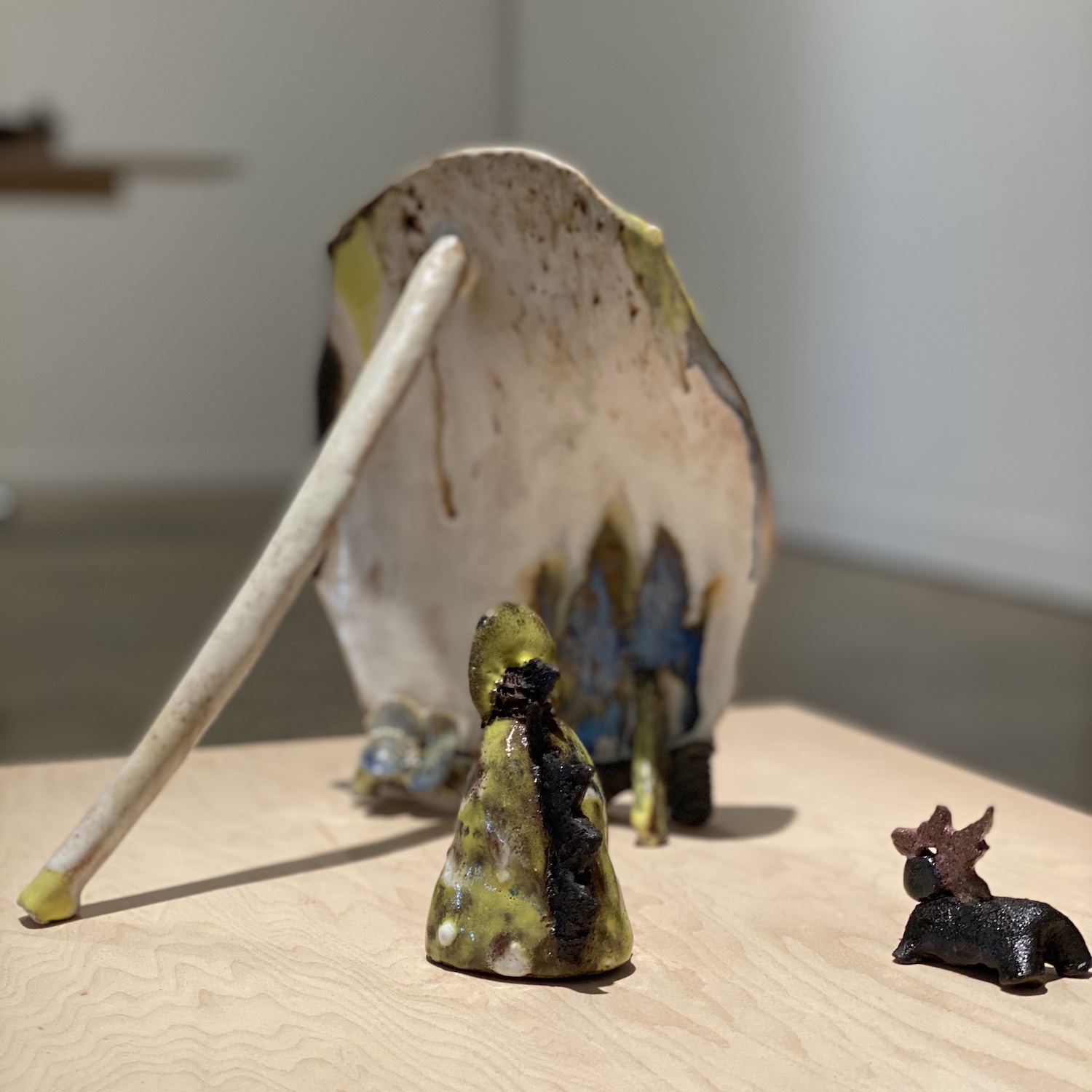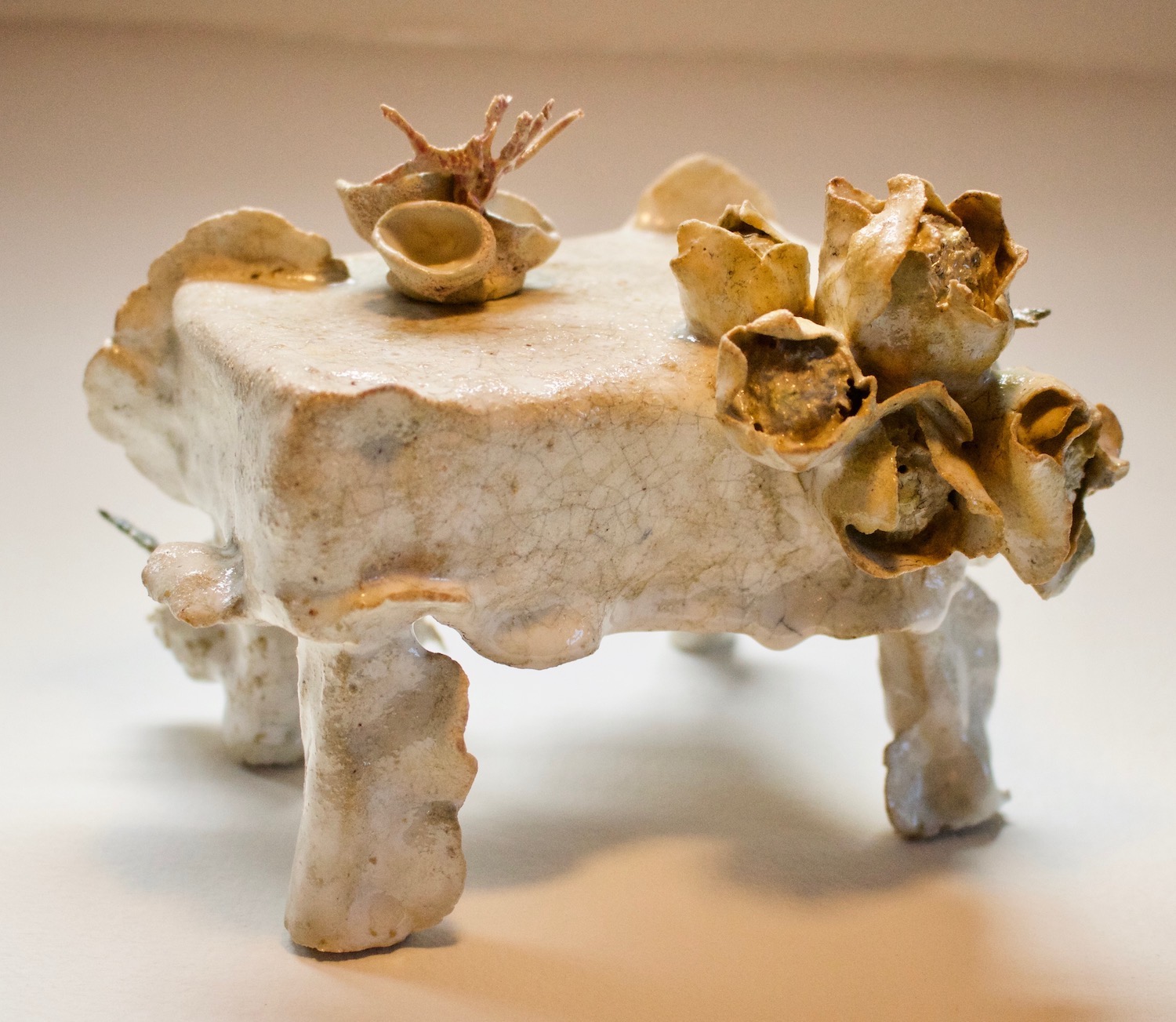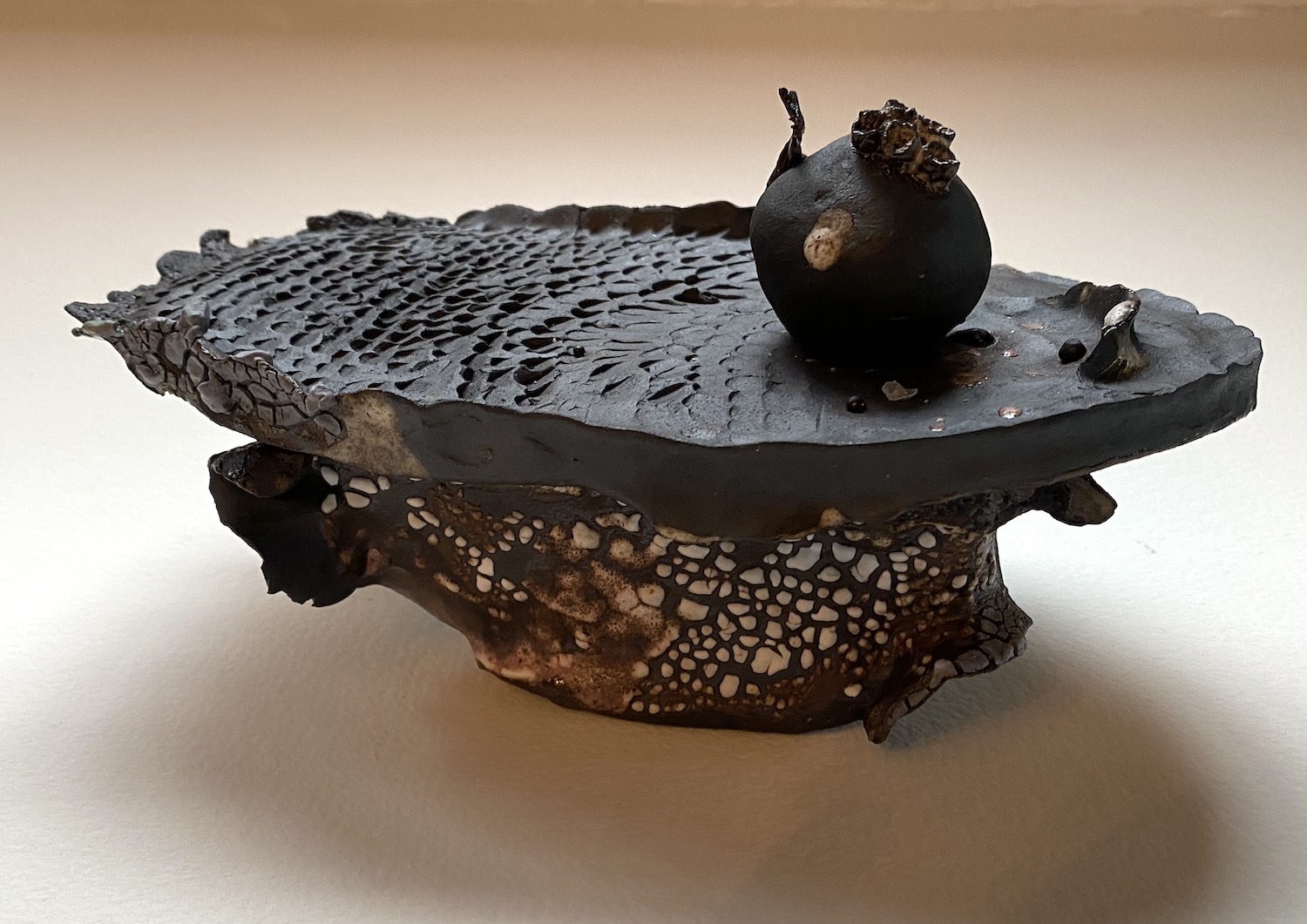Massachusetts
Cat Clifford & David E. Kearns
April 17 – May 22, 2021
“Massachusetts” features new work by Cat Clifford, based in Seattle, and David Kearns of Western Massachusetts. Known for animations and drawings such as the cyanotypes of reductive land- and sky-scapes on view, Clifford returns to her early training in ceramics with a series of diminutive sculptural tableaux. In these, flora and fauna inhabit quasi-domestic objects and spaces. Coral- and fungus-like growth blooms like wings from a tiny table whose tablecloth flutters in sync. The all-white crackle glaze completes their symbiosis. Kearns is also interested in the nature/culture dynamic, but in his work, unlike Clifford’s, their coexistence is far from seamless. In landscape paintings the artist has been developing for almost two decades, dense, Sendak-esque woods are improbably cluttered with picture frames, decoys, hook rugs, and books. These farmhouse items, however, are less strewn than they are placed, whether as formal devices or hidden shrines. A cartoony dog-headed lumberjack makes the occasional appearance. The sense of comedy and mischief about Kearns’s work serves as a foil to the ceramics whose poignancy belies their toy-like scale and occasional functionality as vases.
Besides the difference in tone, the artists’ works also present different physical perspectives on nature. Clifford offers Beatrix Potter-like close-ups of the miniature world of lichen, spider webs and wildflowers as seen from a chipmunk’s perspective, while Kearns’s forests, hills, and cliff-hung shorelines invoke the grandeur of traditional landscape painting. Yet there are important affinities, too; for one, their approach to process. In search of unusual surfaces and color, many more of Clifford’s experiments with multiple glazings and firings are rejected or get destroyed in the kiln than are kept. Kearns’s surfaces are likewise thickened by an additive process of many alternating layers of homemade acrylic paint and glazes. The unusual glowing color and tonal depth in his work is the result of complex, old master glazing techniques that have become practically obsolete. Moreover, both artists invite the remembered, embodied experience of being outdoors into the studio as part of this slow layering and curing of open-ended narratives, images and forms.
The title refers to a shared autobiography between the collaborators; the artists of course, but also Dawna Holloway, the gallery’s owner who came up with the pairing and this title. Clifford and Holloway both grew up in Massachusetts, and Kearns has been based there for the last several years. Like many other states (24 to be exact) Massachusetts takes its name from the language of the indigenous peoples wiped out by its very statehood. It translates from the Algonquian as “at the big little hill,” and refers to the Blue Hills southwest of Boston. Both artists seek out regular immersion in nature, all the while aware of their human selves as a separate, distinct life form. Which is more fragile, their works might suggest, the threatened biosphere or human kind which can no longer survive in and with nature as the people of the Algonquian nations once did.
--Melissa E. Feldman
